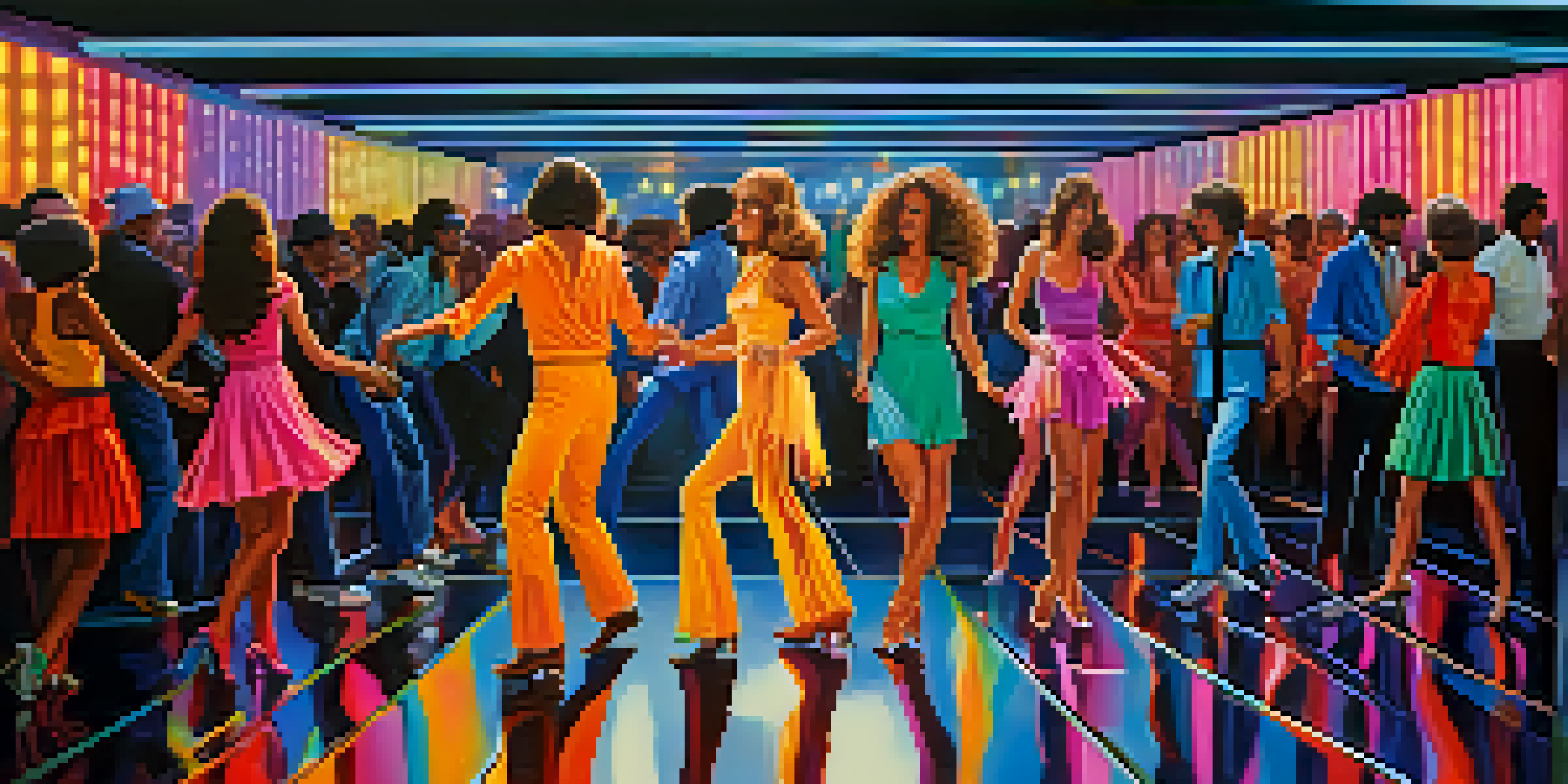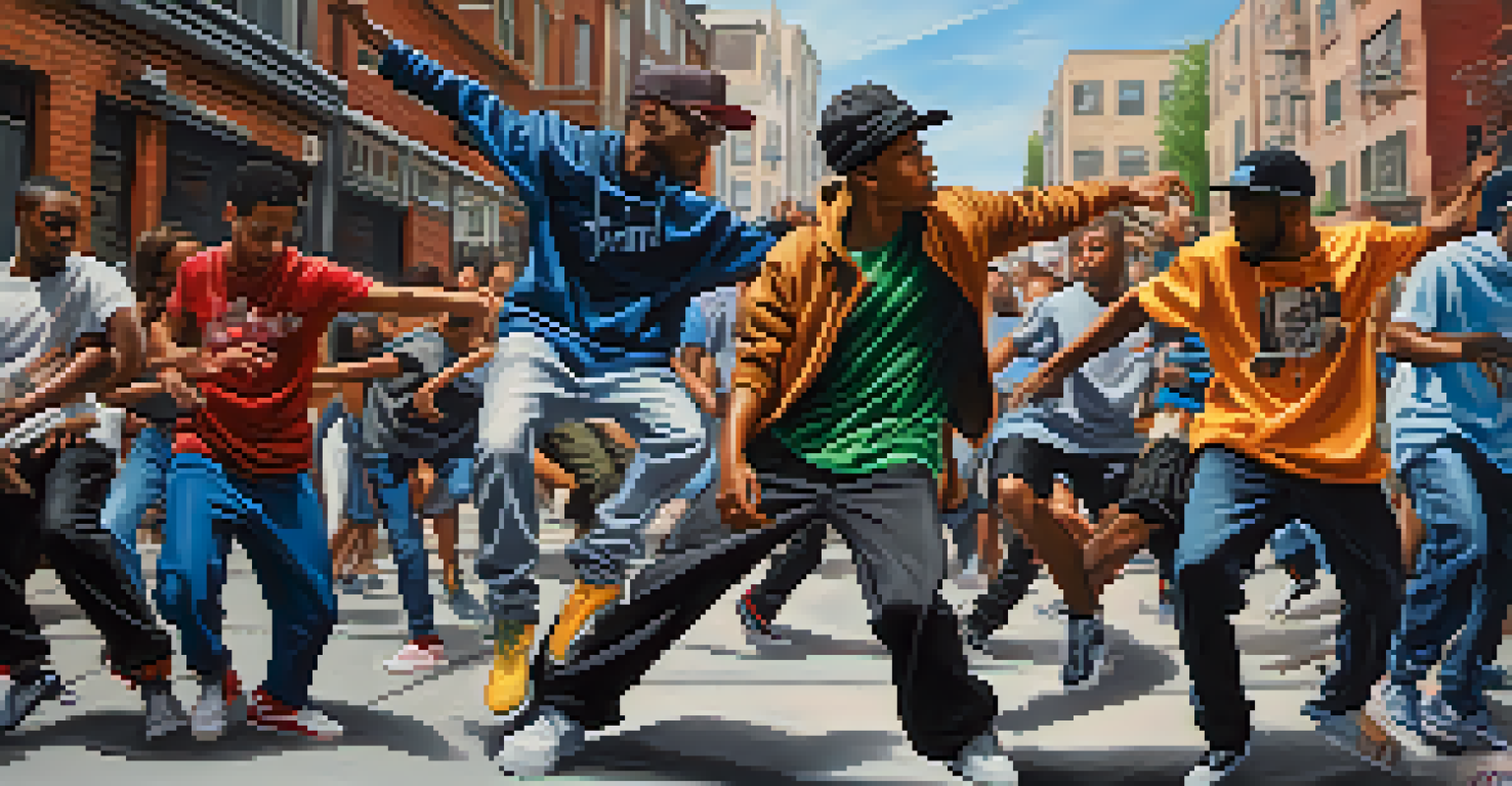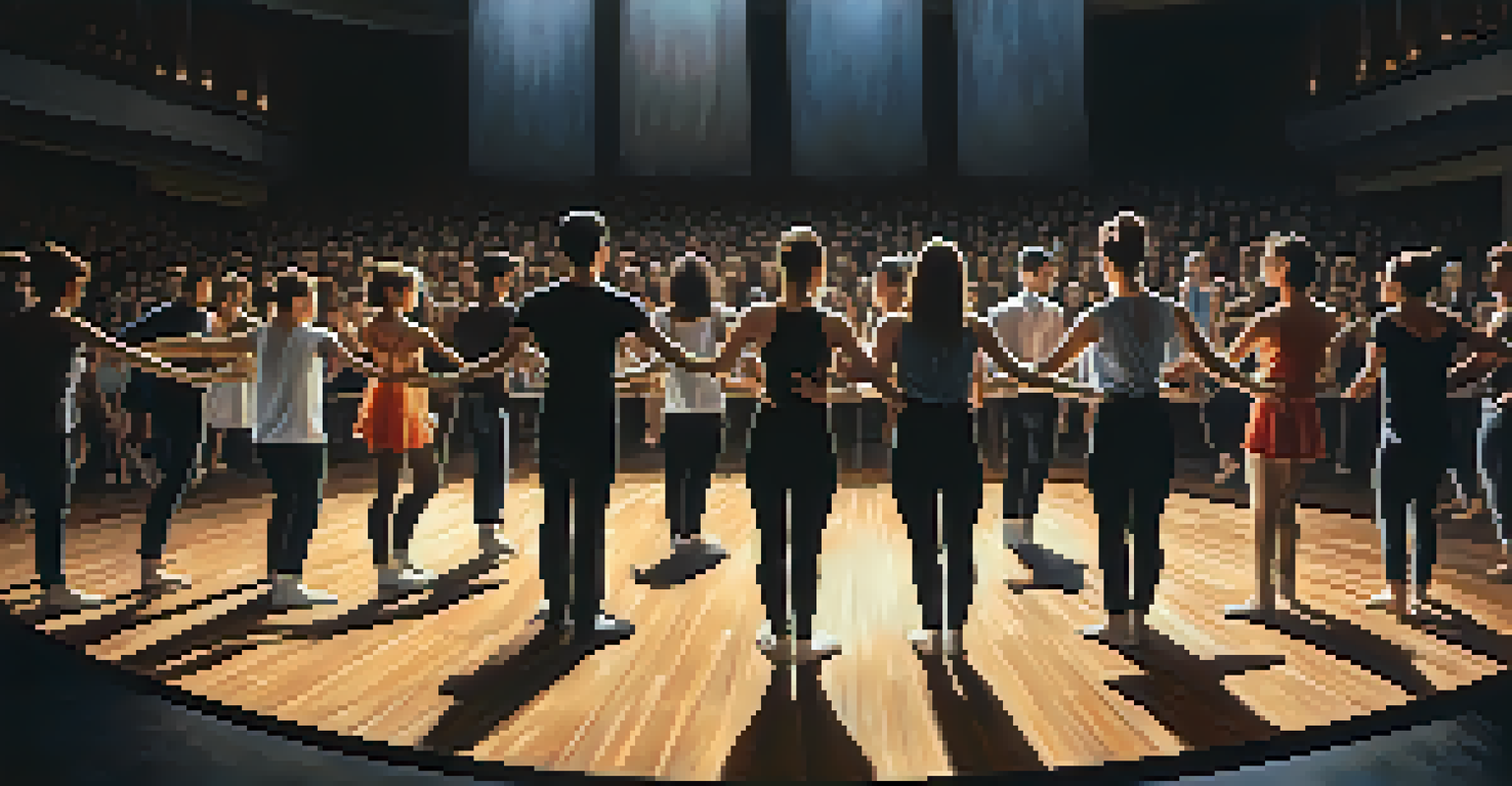The Evolution of Dance Styles in Relation to Music Genres

The Roots of Dance: Folk Traditions and Early Music
Dance has always been a form of expression, deeply rooted in cultural traditions. Early folk dances, like the jig and the tarantella, developed alongside local music, showcasing community stories and shared experiences. These dances often reflected the rhythms and melodies of their time, setting the stage for future styles.
Dance is the hidden language of the soul.
As music evolved with the introduction of instruments, so did dance. In the 17th century, court dances became popular, influenced by classical compositions. This shift represented a move from communal expression to more structured forms of performance, paving the way for the evolution of dance in relation to music.
The connection between folk music and dance created a foundation that would influence countless genres. Each cultural dance embodies a narrative, illustrating how music can unite people, and highlighting the intrinsic relationship between rhythm and movement.
Jazz: The Birth of Freestyle Movement
The 20th century brought jazz music, which revolutionized dance styles. With its improvisational nature, jazz encouraged dancers to express themselves freely, leading to the birth of styles like the Charleston and the Lindy Hop. These dances mirrored the upbeat and syncopated rhythms of jazz, inviting spontaneity and creativity.

As jazz music gained popularity in dance halls, it also paved the way for social dancing. Couples would flock to these venues, showcasing their skills while enjoying the lively tunes. This era marked a significant shift, as dance became a communal activity that transcended social boundaries.
Dance Reflects Cultural Evolution
Throughout history, dance has evolved alongside music, reflecting cultural traditions and community narratives.
The evolution of jazz and its accompanying dance styles highlights the synergy between music and movement. Dancers began to interpret the music in new ways, breaking free from traditional constraints and embracing a more liberated form of expression.
The Influence of Rock 'n' Roll on Dance Culture
Rock 'n' roll emerged in the 1950s, bringing a fresh, rebellious spirit to music and dance. Styles like the Twist and the Jitterbug captured the energetic essence of the genre, encouraging people to get up and move. This era transformed dance into a vibrant social phenomenon, appealing to the youth of the day.
Music can change the world because it can change people.
Dance competitions and social gatherings became popular, showcasing the latest moves and fostering a sense of community. The infectious beats of rock music inspired countless dances, leading to a new wave of expression that resonated with the cultural shifts of the time.
The impact of rock 'n' roll on dance culture underscores the importance of music's evolution in shaping movement. As musicians pushed boundaries, dancers responded, creating a dynamic interplay that continues to influence styles today.
Disco: A New Era of Dance Floors and Freedom
The disco era of the 1970s marked a pivotal moment in dance history, characterized by pulsating beats and vibrant nightlife. The popularity of disco music gave rise to iconic dance styles like the Hustle and the Bump, which were all about style and flair. Dancers embraced the freedom of expression that disco provided, turning dance floors into stages.
Disco also introduced a sense of fashion and identity, as dancers adorned themselves in flashy outfits that matched the upbeat music. Nightclubs became cultural hubs where people came together to celebrate life through dance, fostering a sense of community and belonging.
Genres Inspire New Dance Styles
Each music genre, from jazz to EDM, has inspired unique dance styles, showcasing the dynamic relationship between music and movement.
The disco movement exemplified how music genres can shape dance culture, encouraging self-expression and creativity. This era laid the groundwork for future genres, showing that dance could be both a personal journey and a collective experience.
Hip Hop: Street Culture and Movement
Emerging in the late 1970s, hip hop transformed dance into a powerful form of self-expression rooted in street culture. Breakdancing, popping, and locking became synonymous with hip hop music, showcasing incredible athleticism and creativity. These styles emphasized individual flair while also promoting community and collaboration.
As hip hop gained mainstream popularity, so did its associated dance styles. The dance battles and cyphers became platforms for showcasing talent, allowing dancers to express their identities and stories through movement. This connection between music and dance solidified hip hop as a cultural movement.
The evolution of hip hop dance illustrates the profound impact of music genres on movement. It continues to inspire new generations, proving that dance is not just a reflection of music but a vital aspect of cultural identity.
Electronic Dance Music (EDM): The Rise of Rave Culture
The emergence of electronic dance music (EDM) in the late 1980s and 1990s brought a new dimension to dance culture. With its hypnotic beats and synthesized sounds, EDM gave rise to rave culture, where dancing became an immersive experience. Styles like shuffling and waving became popular, reflecting the energetic and euphoric nature of the music.
Raves and music festivals created spaces for people to connect through dance, often transcending social boundaries. The emphasis on community and shared experience transformed how people interacted with both music and movement, fostering a sense of belonging.
Future Trends in Dance Innovation
The future of dance is shaped by technology and social media, fostering creativity and collaboration among dancers worldwide.
The evolution of EDM and its associated dance styles highlights the ongoing relationship between music and movement. It continues to evolve, pushing boundaries and inviting dancers to explore new forms of expression.
Contemporary Dance: Blending Styles and Genres
Contemporary dance has emerged as a melting pot of various styles, drawing influences from ballet, jazz, hip hop, and more. This genre encourages experimentation, allowing dancers to explore their individuality while incorporating elements from different dance forms. The fusion of styles reflects the diverse landscape of modern music.
As music continues to evolve, so does the way we interpret it through dance. Contemporary choreography often emphasizes storytelling, using movement to convey emotions and narratives that resonate with audiences. This approach highlights the powerful connection between music and movement.

The evolution of contemporary dance showcases how genres can blend, creating new forms of expression. As artists push boundaries and explore new possibilities, the relationship between dance and music remains as dynamic as ever.
The Future of Dance: Trends and Innovations
As we look to the future, the relationship between dance styles and music genres continues to evolve. With the rise of social media platforms, trends can spread rapidly, leading to the emergence of viral dance challenges that blend various styles. This democratization of dance allows for greater creativity and collaboration among dancers worldwide.
Innovations in technology also play a significant role in shaping the future of dance. Virtual reality, motion capture, and digital music production are creating new opportunities for artists to experiment and connect with audiences in ways previously unimaginable. This intersection of technology and dance will likely lead to exciting developments in the years to come.
The evolution of dance styles in relation to music genres is an ongoing journey, one that reflects cultural shifts and individual expression. As we embrace the future, we can expect even more fusion and innovation, keeping the art of dance alive and thriving.